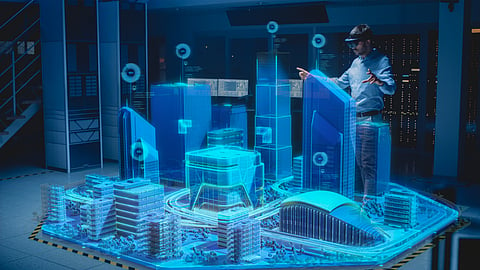Construction designs can still do with more 3D makeover
3D interactive walkthroughs can do their part in fine-tuning the process

The design and construction industries are the backbone of development, shaping the spaces where we live, work and play. However, the sector faces myriad challenges that hinder efficiency, increase costs, and complicate project execution.
From miscommunication and design errors to delays and resource wastage, these issues can significantly impact project outcomes. Fortunately, innovative technologies are stepping in to change the way design and construction are approached, offering solutions that are not only efficient but also transformative.
Technology as game-changer
Advanced technology is addressing these challenges head-on, offering solutions that enhance collaboration, accuracy, and efficiency. From Building Information Modeling (BIM) to drones and AI-driven tools such as life-scale projections and digital twins, technology is redefining the standards of design and construction.
Interactive 3D walkthroughs
Interactive 3D walkthroughs in design and construction offer a service that allows architectural plans to be projected at a 1:1 scale. This immersive experience enables clients and professionals to step directly into their designs before construction begins, bridging the gap between imagination and reality. Here’s how this addresses key industry challenges:
Enhancing communication
By offering a tangible, full-scale representation of designs, this technology ensures all stakeholders have a shared understanding of the project. This eliminates ambiguity and fosters clearer communication, reducing the likelihood of costly misunderstandings.
Identifying and resolving design errors early
Full-scale projections bring potential design flaws to light before they escalate into expensive problems. Architects, designers, and clients can assess layouts, dimensions, and functionality in real time, making necessary adjustments on the spot.
Saving time and costs
Resolving design issues in the planning phase significantly minimizes delays and keeps projects on budget. This technology streamlines the workflow, ensuring a smoother transition from design to construction.
Promoting sustainability
By reducing the need for rework and material wastage, another benefit is that it supports more sustainable construction practices. Accurate planning means fewer resources are wasted, aligning with the industry’s growing emphasis on environmental responsibility.
The integration of technology into the design and construction industry is no longer a luxury but a necessity. Companies using 3D walkthroughs in the implementation of their projects are setting new standards by prioritizing client experience, enhancing design accuracy, and ensuring efficient resource use.
Such innovations will be critical to overcoming persistent challenges and delivering projects that meet demands. For professionals and clients alike, the message is clear: leverage technology to drive collaboration, precision, and sustainability.
Sign up for the Daily Briefing
Get the latest news and updates straight to your inbox


